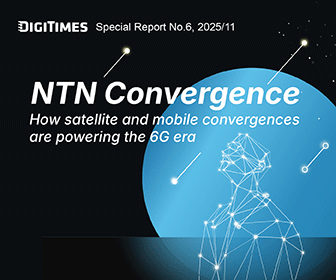Although it's unlikely for smartphone applications to have a turnaround in 2023, generative AI has certainly offered the entire supply chain a glimmer of hope. Both end-user brands and smartphone SoC makers are focusing their technology development on so-called generative AI applications and are fully promoting related visions.
At the Snapdragon Summit, Qualcomm made it very clear that the upcoming Snapdragon 8 Gen 3 is made for generative AI. It can be foreseen that generative AI will be a competition hot zone between Qualcomm and MediaTek in the future.
In fact, Qualcomm has been actively promoting the trend of introducing generative AI into edge devices since the first half of 2023. A key part of its promotion is that Stable Diffusion can be operated on the Snapdragon 8 Gen 2 in offline mode. However, for the consumer market, a single generative AI application is not enough to convince users to buy in.
Naturally, Qualcomm realized this as well. At the Snapdragon Summit, it proposed various generative AI application models. Among them, seeking professional advice through voice assistants is the most intuitive and prominent application.
Besides Stable Diffusion, which can generate AI images based on text inputs, the performance of the Photo Expansion feature has also received a lot of attention. This feature uses AI to simulate the existing photo's scenario and expand the photo's content.
The generative AI competition on smartphone SoCs encompasses both hardware and software aspects. In terms of hardware, the focus is on the design capabilities of overall and individual module architectures. Figuring out a way to operate with lower power consumption and more efficient memory usage will be the most significant challenge and main battleground for the smartphone SoC industry.
As a result, both Qualcomm's NPU and APU are expected to become increasingly important. The operational efficiency of the AI computing core and other cores such as the CPU, GPU, and sensor cores will also be a decisive factor in the design.
Sources familiar with the smartphone supply chain pointed out that for the past several years, the selling points of the smartphone market have been centered around gaming and photography features. Even when AI features were introduced, they were mainly there to enhance gaming and photography performance. However, generative AI applications could cause a significant change in the mobile device user experience.
Qualcomm CEO Christiano Amon believes that generative AI will redefine all personal mobile devices. The previously app-centered usage scenarios will instead be centered around AI operations, providing notifications, reminders, and consultations tailored to individual needs. These functions will allow consumers to truly realize the practical benefits of AI. He also predicted that generative AI would be the savior of the entire smartphone mobile industry.
However, in addition to having sufficient computing power on the hardware side, as well as optimizing power consumption and memory usage, the collaboration and joint development between software companies and AI model suppliers are equally as important. Major IC design companies admitted that in the era of generative AI, software technology is likely more important than hardware technology.
Qualcomm indeed has the advantage on the software side. From Microsoft, Google, and Meta to Chinese AI model suppliers and startup teams developing generative AI applications, they all have collaborated with Qualcomm's Snapdragon 8 Gen 3. For competitors such as Apple and MediaTek, they'll likely face a lot of pressure in the AI sector in the future.



